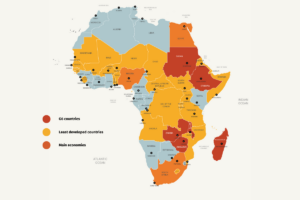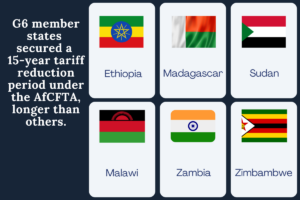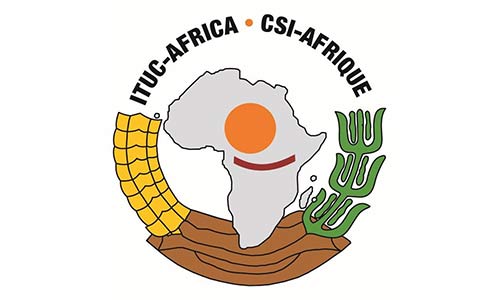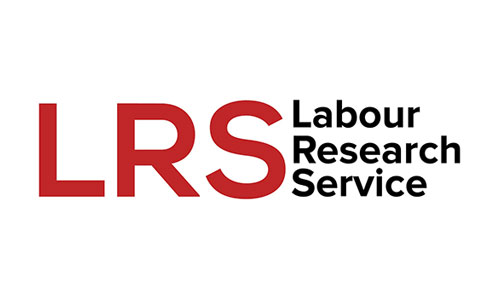Removing trade barriers in Africa is a complex task due to disparities between countries. Trade unions need to understand their country’s classification, what it means for removing barriers, and how it affects trade in goods.
Classifying countries under the AfCFTA

Main economies
South Africa, Egypt and Nigeria.
These three countries make up half of the continent’s GDP and are better equipped to make the AfCFTA a tool for development.
Least developed countries
Angola, Benin, Burkina Faso, Burundi, Central African Republic, Chad, Comoros, Democratic Republic of the Congo, Djibouti, Eritrea, Gambia, Guinea, Guinea-Bissau, Lesotho, Mali, Mauritania, Mozambique, Niger, Rwanda, Sao Tomé and Principe, Senegal, Sierra Leone, Somalia, South Sudan, Togo, Tanzania, and Uganda.
Least developed countries (LDCs) have higher trade barriers, poorer socio-economic performance, and more risk of job losses due to the AfCFTA.
G6 countries
Ethiopia, Madagascar, Malawi, Sudan, Zambia and Zimbabwe.
G6 countries face unique challenges and have and have negotiated a longer implementation period.
Is your country a least developed country under the AfCFTA?
The 54 countries that signed the AfCFTA vary widely in economic development, local production, and trade capacities. Nigeria, Egypt, and South Africa alone account for 50% of the continent’s GDP. The benefits of tariff reduction under the AfCFTA will depend on a country’s level of specialisation and competitiveness (ITUC, 2008). Countries with already low tariffs will experience a smaller impact. According to the World Bank Group (2020), countries such as Cameroon, Nigeria, Ethiopia, Madagascar, the Democratic Republic of Congo, and Egypt will face significant impacts due to their high trade barriers, with varying effects on their fiscal positions.
Allowing for Least Developed Countries (LDCs) in trade agreements acknowledges the disparities between countries. It recognises that LDCs may lose important tariff revenue due to trade liberalisation, and their local industries could face increased competition from international rivals, risking local jobs.
Consequently, LDCs are granted ten years, longer than the five years given to more developed countries, to remove trade barriers. This longer implementation period aims to soften the financial blow, but its effectiveness depends on supporting measures for local labour, farmers, and small enterprise.
Is your country one of the group of six?

The AfCFTA also recognises a group of six member states, which includes five Least Developed Countries (Ethiopia, Madagascar, Malawi, Sudan, Zambia) and Zimbabwe. Known as the G6, they have invoked the special and differential treatment principles, citing specific development challenges, and will need more time to remove trade barriers. The G6 secured a 15-year tariff reduction period from the AfCFTA Assembly, longer than the 10 years for other LDCs and 5 years for all other countries.
RELATED ARTICLES
- AfCFTA Protocol on Trade in Goods: Eight questions for trade unions to ask
-
How unions can influence the AFCFTA Protocol on Trade in Goods
-
Why it pays to link products to places – and how countries in Africa can do it
Marie Daniel
Marie Daniel is an Associate at Labour Research Service. Marie has an urban studies and development economics background and one of her research passions is organisation and participation approaches within the informal sector. She is intrigued by the manner in which participatory democracy is approached and implemented in South Africa.




